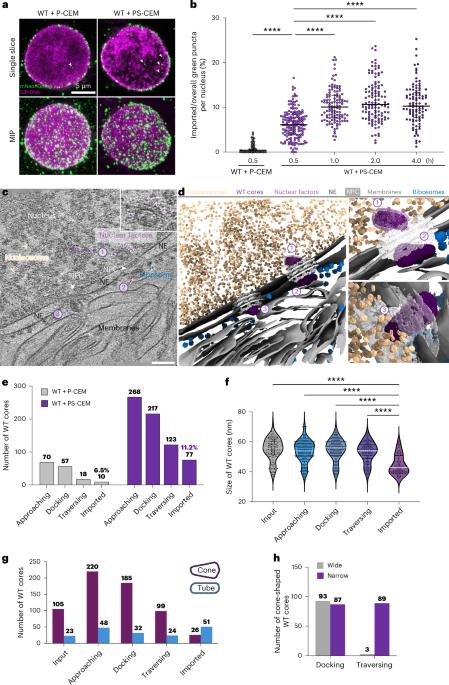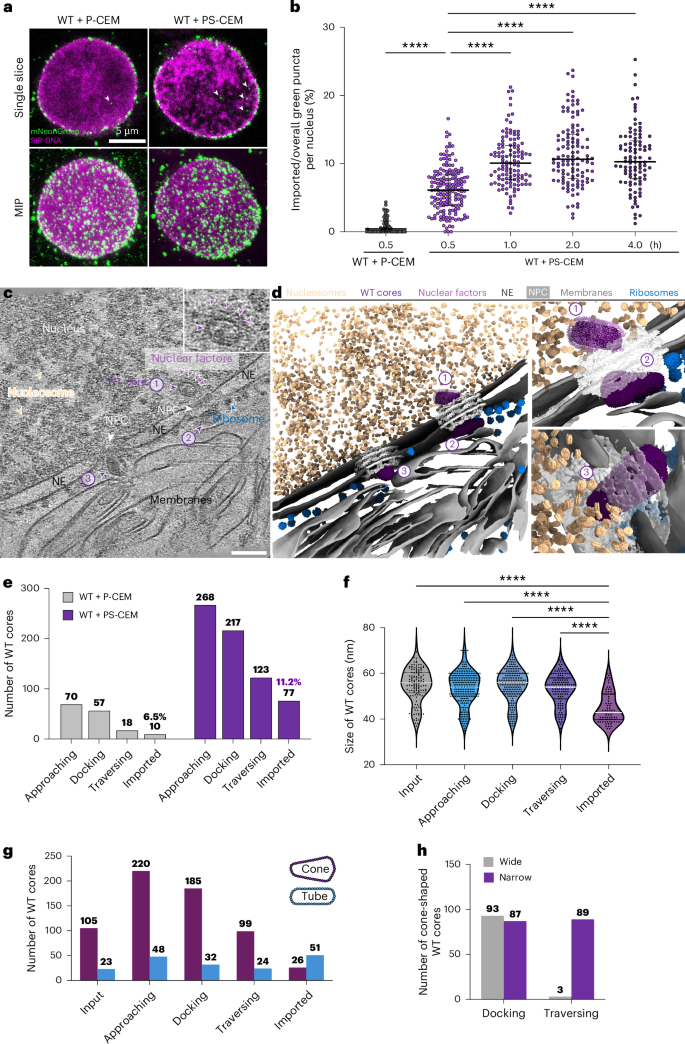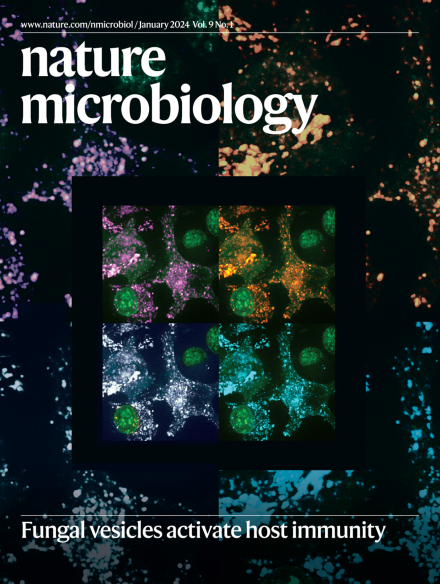HIV-1 nuclear import is selective and depends on both capsid elasticity and nuclear pore adaptability
IF 19.4
1区 生物学
Q1 MICROBIOLOGY
引用次数: 0
Abstract
Lentiviruses, such as HIV-1, infect non-dividing cells by traversing the nuclear pore complex (NPC); however, the detailed molecular processes remain unclear. Here we reconstituted functional HIV-1 nuclear import using permeabilized T cells and isolated HIV-1 cores, which significantly increases import events, and developed an integrated three-dimensional cryo-correlative workflow to specifically target and image 1,489 native HIV-1 cores at 4 distinct nuclear import stages using cryo-electron tomography. We found HIV-1 nuclear import depends on both capsid elasticity and nuclear pore adaptability. The NPC acts as a selective filter, preferentially importing smaller cores, while expanding and deforming to accommodate their passage. Brittle mutant cores fail to enter the NPC, while CPSF6-binding-deficient cores enter but stall within the NPC, leading to impaired nuclear import. This study uncovers the interplay between the HIV-1 core and the NPC and provides a framework to dissect HIV-1 nuclear import and downstream events, such as uncoating and integration. By developing a functional nuclear import system and correlative imaging workflow, this study reveals that HIV-1 nuclear entry relies on the elasticity of both the viral capsid and the nuclear pore to enable the selective passage of small HIV-1 cores.


HIV-1核输入是选择性的,取决于衣壳弹性和核孔适应性
慢病毒,如HIV-1,通过穿过核孔复合体(NPC)感染非分裂细胞;然而,详细的分子过程仍不清楚。在这里,我们使用渗透T细胞和分离的HIV-1核重建了功能性HIV-1核输入,这显著增加了输入事件,并开发了一个集成的三维冷冻相关工作流程,利用冷冻电子断层扫描在4个不同的核输入阶段特异性地靶向和成像1,489个天然HIV-1核。我们发现HIV-1核导入依赖于衣壳弹性和核孔适应性。NPC作为一个选择性过滤器,优先导入较小的核心,同时扩展和变形以适应它们的通过。脆性突变体核不能进入NPC,而cpsf6结合缺陷核进入NPC但在NPC内停滞,导致核进口受损。这项研究揭示了HIV-1核心和NPC之间的相互作用,并提供了一个框架来剖析HIV-1核导入和下游事件,如剥离和整合。
本文章由计算机程序翻译,如有差异,请以英文原文为准。
求助全文
约1分钟内获得全文
求助全文
来源期刊

Nature Microbiology
Immunology and Microbiology-Microbiology
CiteScore
44.40
自引率
1.10%
发文量
226
期刊介绍:
Nature Microbiology aims to cover a comprehensive range of topics related to microorganisms. This includes:
Evolution: The journal is interested in exploring the evolutionary aspects of microorganisms. This may include research on their genetic diversity, adaptation, and speciation over time.
Physiology and cell biology: Nature Microbiology seeks to understand the functions and characteristics of microorganisms at the cellular and physiological levels. This may involve studying their metabolism, growth patterns, and cellular processes.
Interactions: The journal focuses on the interactions microorganisms have with each other, as well as their interactions with hosts or the environment. This encompasses investigations into microbial communities, symbiotic relationships, and microbial responses to different environments.
Societal significance: Nature Microbiology recognizes the societal impact of microorganisms and welcomes studies that explore their practical applications. This may include research on microbial diseases, biotechnology, or environmental remediation.
In summary, Nature Microbiology is interested in research related to the evolution, physiology and cell biology of microorganisms, their interactions, and their societal relevance.
 求助内容:
求助内容: 应助结果提醒方式:
应助结果提醒方式:


